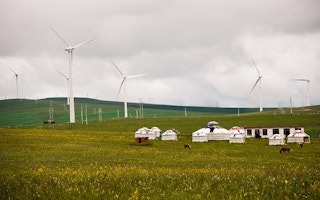Global energy-related carbon dioxide emissions (CO2) – the largest source of man-made greenhouse gas emissions – stayed flat for the second year in a row, according to analysis of preliminary data for 2015 released on Wednesday by the International Energy Agency (IEA).
“The new figures confirm last year’s surprising but welcome news: we now have seen two straight years of greenhouse gas emissions decoupling from economic growth,” said IEA Executive Director Fatih Birol.
“Coming just a few months after the landmark COP21 agreement in Paris, this is yet another boost to the global fight against climate change.”

Global emissions of carbon dioxide stood at 32.1 billion tonnes in 2015, having remained essentially flat since 2013.
The IEA preliminary data suggest that electricity generated by renewables played a critical role, having accounted for around 90 per cent of new electricity generation in 2015; wind alone produced more than half of new electricity generation.
In parallel, the global economy continued to grow by more than 3 per cent, offering further evidence that the link between economic growth and emissions growth is weakening.
In the more than 40 years in which the IEA has been providing information on CO2 emissions, there have been only four periods in which emissions stood still or fell compared to the previous year. Three of those – the early 1980s, 1992 and 2009 – were associated with global economic weakness.
But the recent stall in emissions comes amid economic expansion: according to the International Monetary Fund, global GDP grew by 3.4 per cent in 2014 and 3.1 per cent in 2015.
“
We now have seen two straight years of greenhouse gas emissions decoupling from economic growth.
Fatih Birol, IEA Executive Director
The two largest emitters, China and the United States, both registered a decline in energy-related CO2 in 2015.
In China, emissions declined by 1.5 per cent, as coal use dropped for the second year in a row. The economic restructuring towards less energy-intensive industries and the government’s efforts to decarbonise electricity generation pushed coal use down.
In 2015, coal generated less than 70 per cent of Chinese electricity, ten percentage points less than four years ago (in 2011). Over the same period low-carbon sources jumped from 19 per cent to 28 per cent, with hydro and wind accounting for most of the increase.
In the United States, emissions declined by 2 per cent, as a large switch from coal to natural gas use in electricity generation took place.
The decline observed in the two major emitters was offset by increasing emissions in most other Asian developing economies and the Middle East, and also a moderate increase in Europe.
More details on the data and analysis will be included in a World Energy Outlook special report on energy and air quality that will be released at the end of June.
The report will go beyond CO2 emissions and will provide a first in-depth analysis of the role the energy sector plays in air pollution, a crucial policy issue that today results in 7 million premature deaths a year.
The report will provide the outlook for emissions and their impact on health, and provide policy makers with strategies to mitigate energy-related air pollution in the short and long term.
To download annual energy-related CO2 emissions data, click here. To read last year’s announcement about CO2 emissions, click here.










